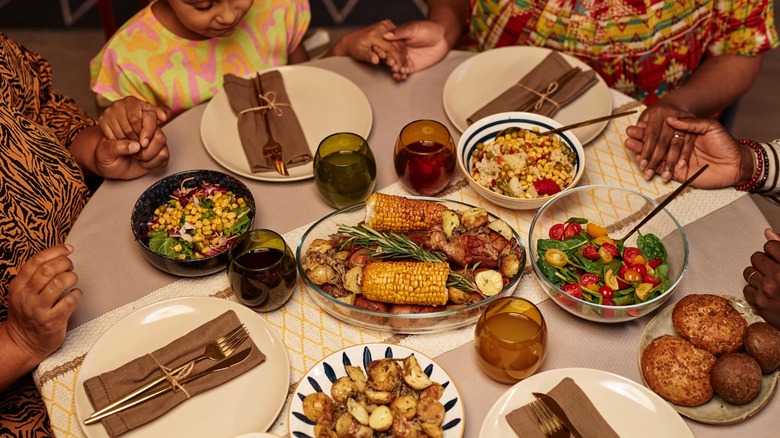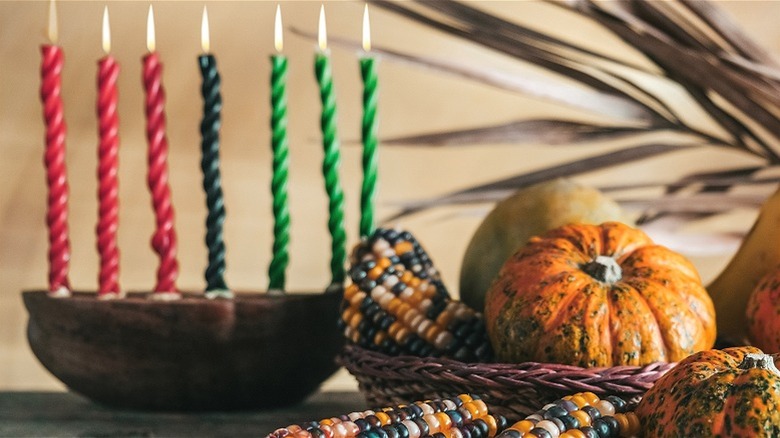The Food Traditions That Make Kwanzaa's Feast So Meaningful
Like many of the winter holidays, the food traditions loom large over the vibrant tables of the Kwanzaa feasts. However, rather than being a religious holiday, like Christmas, Kwanzaa is a cultural holiday originally created in 1966 by Maulana Karenga, an activist, author, and professor of Africana studies. The holiday is celebrated by many Black people, primarily in the United States, though Black people in countries such as Canada, Jamaica, Brazil, France, and the United Kingdom also observe Kwanzaa. Some people consider it an alternative to Christmas, though some celebrate both.
Kwanzaa lasts seven days, from December 26 to January 1. On the sixth day, the table comes alive when family and friends gather around for the karamu, the season's big feast (though, as with any holiday, the feast may take place on a day that's most convenient for the attendees).
The word "Kwanzaa" comes from the Swahili phrase "matunda ya kwanza." It means "first fruits." Although the holiday is not African in origin, the inspiration for the holiday was drawn, in part, from the harvest celebrations that take place there and beyond. Kwanzaa menus often include dishes from the Caribbean, Africa, South America, and the American South. It's not uncommon for spreads to include foods like candied yams, African peanut stew, cornbread, thieboudienne (Senegalese jollof rice), creamy mac and cheese, buttermilk biscuits, fritters, and Philadelphia pepper pot stew, though there's no right or wrong way to celebrate. And while the food is important, what's even more important is that the food is shared with family and friends.
The seven symbols of Kwanzaa
The symbolism of Kwanzaa is not just reflected in the foods that people eat. It's also reflected in the centerpiece on the dinner table, which includes seven elements. The first is the placemat, called the mkeka, which creates a foundation on which the other six symbols rest. On top of the mkeka goes the kinara, the candelabra that celebrates a family's ancestors. It holds the mishumaa saba, which are seven candles: three red, three green, and one black. A candle is lit each night, starting with the black one in the center, until all have been lit.
And even here, food weaves its way into the imagery. The kikombe cha umoja is the unity cup that family and friends pass around the table. The centerpiece also embraces food as symbols, the first of which is the muhindi, or corn that represents the children. The family displays one ear of corn for each child they have. If the family doesn't have children, they still display two ears of corn to denote other nearby children; symbolically, everyone in the community is responsible for them. The second food symbol, the mazao, comprises winter and fall seasonal produce like pumpkins, squash, and colorful apple varieties. These are the physical embodiment of the work that the family's symbolic village produces together.
And the seventh symbol is the zawadi, the gifts. Handmade gifts like dolls, kinaras, or even Kwanzaa-themed treats are encouraged to foster creativity. Accepting a gift means you willingly take on the responsibility of being a member of the group. Gift acceptance also suggests a promise to support the health of the community throughout the year.

